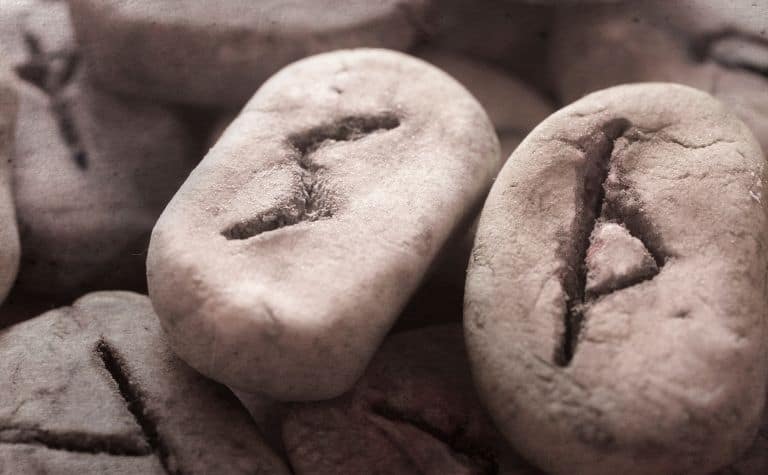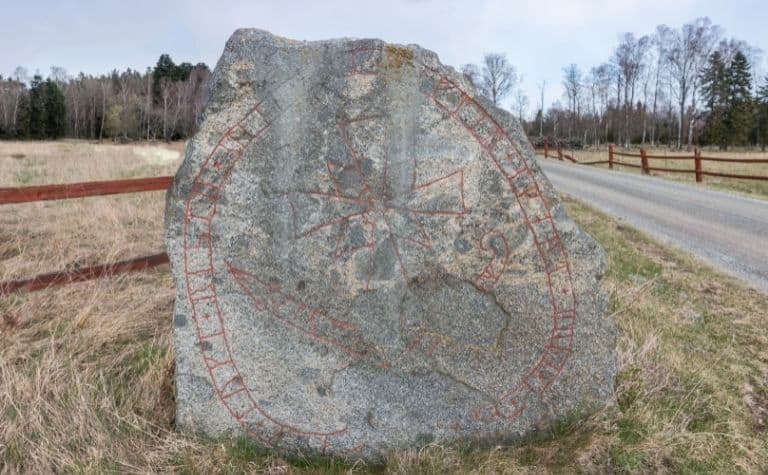Asgard and Valhalla are key elements in Norse mythology. One is described as an orderly world where magnificent palaces dot the serene landscape, while the other is a majestic assembly hall built for a singular purpose.
Where one embodies what the establishment of perfect order looks like through a Viking lens, the other represents the cruel, unyielding nature of fate in the Norse cosmos.
Asgard is one of the nine worlds of the Norse cosmos, where the Aesir gods reside and conduct their godly affairs.
Valhalla is a majestic hall within Asgard, overseen by Odin, and home to the mighty einherjar, an army of resurrected Viking warriors who await their final battle at Ragnarok.
Asgard and Valhalla conjure up images of awe-inspiring grandeur, but their significance in Norse mythology runs far deeper than mere appearance.
Both have elements that are reminiscent of heaven, but in reality, they are intimately tied to the Ragnarok narrative of the Norse apocalypse.
In the grand scheme of the Norse universe, Valhalla has far greater significance. Keep reading to find out why. Keep reading to learn more.

What is the Meaning of Valhalla?
The Vikings had very strong beliefs regarding the afterlife, and life-after-death narratives are very prominent in Norse mythology.
There are arguably no less than five destinations in the afterlife where Vikings could find themselves once their earthly existence came to an end, and of these, Valhalla is the most celebrated and illustrious, with admittance being reserved for a very select group of Vikings. [1] (Also see Is Valhalla Heaven or Hell?)
According to Norse mythology, only those Vikings who died an honorable death in battle or performed noble deeds beyond compare would even be considered for entry into Valhalla, the name of which comes from the Old Norse word meaning “hall of the fallen.” [2] (See the full article Did Vikings Have to Die with Sword in Hand to Reach Valhalla?)
While Viking warriors viewed Valhalla as the ultimate reward for a life cut short with valor, its greater meaning is tied to Ragnarok, the Norse end of days. (Also see Did Female Vikings Go to Valhalla?)
A central theme that runs throughout the many narratives woven into Norse mythology is that of inescapable fate.
No one, not even the gods, could alter fate or escape from its consequences. In fact, Ragnarok’s meaning in Old Norse is “fate of the gods.” [3]
According to Norse prophecy, it was foretold that with the arrival of Ragnarok:
- The Aesir gods and Jotnar (giants) would face off in a cataclysmic battle to the death (Also see The Giants of Norse Mythology: Who Were They?)
- Even the all-father Odin and the almighty Thor were fated to meet their demise during Ragnarok
- Virtually every living thing in the Norse universe would perish, and all the worlds of the cosmos would be destroyed
- From the apocalyptic hellscape would emerge a new world order, rebuilt by the few survivors of Ragnarok [4]
The key takeaway as far as the greater meaning of Valhalla is that it embodies the Viking warrior spirit.
Despite the fact that they were doomed to be annihilated at Ragnarok, gaining entry into Valhalla and joining the ranks of Odin’s einherjar was the greatest honor imaginable to a Viking.
The Vikings knew that all would perish at Ragnarok, but to fight alongside the likes of Odin and Thor was still the ultimate distinction.

What is the Meaning of Asgard?
The Norse perception of the universe consists of nine worlds, and Asgard is the realm belonging to the Aesir gods, whose ranks include:
- The all-father Odin, (Also see Do People Still Believe In Odin?)
- The god of thunder Thor
- The mighty goddess Freyja [5]
These are just to name a few. Asgard is where the Aesir gods live, socialize with one another, and convene together to discuss matters of great importance.
Conceptually speaking, Asgard is far more than just the world that the Aesir gods call their home.
The name itself is Old Norse for “enclosure of the Aesir” and exemplifies a fundamental theme derived from ancient Germanic paganism.
The constant battle between order and chaos is a recurring theme in both ancient Germanic and Norse mythologies, as expressed through two key concepts:
- Innangard – meaning “inside the fence,” is used to describe that which is orderly, regulated, organized, and honorable (innangard can refer to a physical location or an attribute). Asgard epitomizes the concept of innangard.
- Utangard – represents that which is “beyond the fence” and comprises places or characteristics that are chaotic, disorderly, turbulent, and lawless. The realm of the Jotnar (giants), Jotunheim, exemplifies the idea behind utangard. [6]
Asgard represents the Norse ideal of perfect order, a utopia where all beings live in harmony with each other, and a pervading sense of peace binds everything together.
But as foretold by the prophecies concerning Ragnarok, this order, along with all that existing in the entire universe, will be tested to the extreme and ultimately destroyed in order to usher in a new beginning where at last, chaos is destroyed once and for all. (Also see What Did the Vikings Look Like?)
Who Lives in Valhalla?
Valhalla is a majestic hall located within Asgard existing for the singular purpose of housing Odin’s army of einherjar, resurrected Viking warriors, chieftains, and nobles, hand-selected by Odin and his Valkyries to confront the giants during the apocalyptic events of Ragnarok.
From the perspective of a fallen Viking who awakes to find himself within its walls, Valhalla is a warrior’s paradise:
- Days are spent training and fighting amongst each other, but all wounds heal, and full health is restored by evening
- Nightly feasts are held with the main course prepared from the magical boar Saehrimnir, whose meat and flesh is replenished every morning
- An endless supply of the finest mead is drawn from the udder of the goat Heidrun
- Odin’s beautiful maiden-warrior Valkyries are on hand to serve food and drink to the einherjar
- The all-father Odin himself graces the attendees with his presence every night [7]
Norse mythology is unclear as to whether Odin and his Valkyries personally select members of his einherjar from among fallen on fields of battle or they actually pre-determined who would die in battle.
Regardless, those who find themselves in Valhalla are among truly elite company. Norse sagas even describe specific Norsemen and their journey to Valhalla:
- Eric Bloodaxe, a 10th-century ruler of Norway
- Haakon the Good, a 10th-century king of Norway
- Ragnar Lodbrok, a 9th-century hero from Denmark [8]
Valhalla is described as a true visual spectacle with rafters made from spears, a roof constructed from shields, and a wolf hanging over its entrance.
But perhaps the most impressive feature about Valhalla is its sheer size and the number of einherjar it houses. According to the Poetic Edda,
“Five hundred doors | and forty there are,
I ween, in Valhall’s walls;
Eight hundred fighters | through one door fare
When to war with the wolf, they go.” [9]
If this description is to be taken literally, 800 fighters emerging from 540 doors would equate to an impressive fighting force of 432,000 of old Scandinavia’s finest (and selectively resurrected) warriors. (Also see The Yggdrasil Tree: The Sacred Tree in Norse Mythology)
Who Lives in Asgard?
Asgard is described in idyllic terms as a place of such beauty and grandeur as to be the exclusive sanctuary for the Aesir gods of Norse mythology.
But to equate Asgard as the Viking version of heaven would be inaccurate.
It would be fairer to say that Asgard is the Mount Olympus of Norse mythology, a world unto itself where gods reside, commune with each other, and conduct their godly business. [10] (Also see Do Norse Gods Age and Die?)
As one of the nine worlds of the Norse cosmos specially set aside for the Aesir gods, Asgard has but one entrance, accessible by a rainbow bridge known as Bifrost and guarded by the god Heimdall.
Each of the Aesir gods who call Asgard home has their own exclusive domain and palatial residence:
- Odin’s primary residence is a grand hall named Valaskjalf with a gleaming roof constructed from silver (Odin also spent a significant amount of time at Valhalla communing with his einherjar)
- Thor’s palace is known as Thrudvangar and boasts 540 rooms
- Heimdall’s home is called Himinbiorg
- Other prominent Aesir gods who called Asgard their home include Baldur, Freyja, Njord, Freyr, and Frigg [11]
Conclusion
Vikings fought to the death to enter Valhalla, even knowing that fate was against them and victory at Ragnarok was not to be had.
References:
[1] Source
[2] Source
[3] Source
[4] Source
[5] Source
[6] Source
[7] Source
[8] Source
[9] Source
[10] Source
[11] Source
